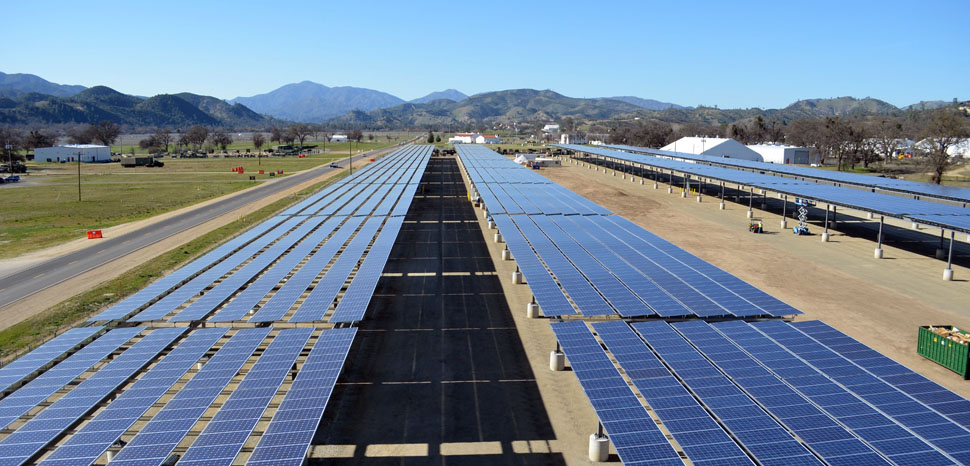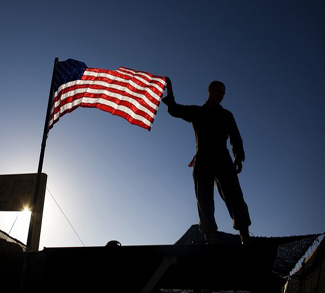The Pentagon has recognized for years that climate change threatens military bases across the United States. The new administration has made climate resiliency for the DoD even more of a priority, but the spate of recent cyberattacks on US infrastructure and business like the Colonial Pipeline attack are a warning that climate change and extreme weather are not the only threats to domestic military infrastructure. They are, in the words of one analyst, “a taste of things to come” and a realization of former Chairman of the Joint Chiefs, General Martin Dempsey’s warning that “the homeland is no longer a sanctuary.” This sentiment was reiterated in the 2018 National Defense Strategy, but it is often difficult to understand exactly what it means and what the implications are. And when it is hard to conceptualize the threat, it is difficult to allocate resources and funding to defend against it. The recent cyberattack on Colonial Pipeline offers a clear example of the threat to domestic US military infrastructure and points to specific investments the Pentagon should make to increase domestic resiliency – investing in microgrids, renewable energies, energy storage, and ensuring preparedness via simulated infrastructure failure exercises. Major attacks against the meatpacking company JBS and Fujifilm, now a maker of key technology for COVID-19 testing, underscore the continued risk of cyberattacks on infrastructure and key businesses in the commercial sector.
The recent ransomware attack on the Colonial Pipeline should be a clear message to Pentagon leaders that they need to take the energy resilience of defense installations seriously. During the attack, cyber criminals seized business data from Colonial Pipeline’s networks and held it hostage until the company paid a $5 million ransom. While the pipeline was only shut down for a few days, it took several more days to restart operations. The effects of temporarily shutting down one of the largest pipelines in the United States, which supplies the East Coast with roughly 100 million gallons of fuel per day, rippled across the economy, causing gas prices to spike to a six-year high. The Colonial Pipeline attack should be a clear message to Pentagon leaders that they need to take the energy resilience of defense installations seriously. It also demonstrated how the commercial sector’s vulnerability to cyberattacks quickly becomes a military liability – as recently as 2008, as much as 85 percent of the Department of Defense’s energy was commercially owned with 99 percent of its energy coming from off base. Because of the Colonial Pipeline disruption, military bases across the South were running low on gasoline, affecting all of the services, and many on-base gas stations either ran dry or were forced to ration supplies. The disruption also caused shortages of commercial jet fuel and fuel for the military. The situation was dire enough that the federal government considered distributing supplies from the military’s fuel stockpile. As one expert put it, “we can now see very clearly how the military’s dependence on civilian infrastructure creates vulnerability for the armed forces.”
Thankfully, military leaders have already been investing in the energy resilience of bases across the country, and that investment seems likely to increase under President Biden given the administration’s climate goals. The US military is the world’s largest institutional user of petroleum fuels and accounts for nearly 80 percent of the federal government’s energy usage. If reducing petroleum fuel use can help make bases more resilient and give warfighters an edge while reducing the military’s carbon footprint, both politicians and military leadership would consider it a win-win.
Every domestic military base should be energy resilient enough to guarantee its own energy needs are met during periods of disruption after events like a cyberattack or natural disaster. One way the military can promote this resilience is through the use of microgrids, which are locally controllable energy networks sizable enough to supply local demand but which can also disconnect from the larger grid if the latter is threatened. For example, a military base that has a microgrid could disconnect from the primary grid during a regional outage and continue functioning with energy produced from on-base sources. Researchers have also argued that by investing in domestic energy resiliency, the Pentagon can help support the resiliency of the rest of the US grid by making up for lost output in civilian generation facilities. While the DoD has started building out microgrids at some bases, the investment is small and needs to be significantly increased in order for the military to be energy resilient. To support its efforts with building microgrids, the military should also invest in renewable energy production and energy storage. With large installations all over the country, the military has a range of options when it comes to investing in both.
The vast size of some Department of Defense installations and their locations (like the Mojave Desert) make them ideal for large wind and solar projects that might not work at other sites. One Pentagon study found that there was enough land on military bases in California suitable for hosting solar arrays capable of generating the equivalent energy output of seven nuclear power plants. Other bases could invest in geothermal energy production like heat pumps, or potentially the small, mobile nuclear reactors the Army has been developing. The Navy already operates over one hundred small nuclear reactors to power ships, submarines, and train sailors – roughly half of the reactors in the United States are Navy-operated. To its credit, the military nearly doubled its renewable energy generation between 2011 and 2015. But it remains the world’s largest institutional consumer of petroleum and has a long way to go towards enhanced energy efficiency and resilience. So far, the military has focused on major improvements at a smaller number of installations, but the Pentagon should set minimum targets for bases across the country that mandate a certain amount of energy be generated from renewable sources.
Energy storage is also critical to resilience. Even the most resilient grid will fail when power generation fails if there are no reserves of stored energy, and the easiest way to store electricity today is with large batteries. So far the Pentagon has invested in only a few major battery projects, but continuing progress in battery technology makes them increasingly effective as a back-up option. Advances in “community energy storage,” where stored energy is distributed on a grid instead of held in large reservoirs, is another method. Hydrogen is another promising option for military platforms and installations because it can be used to store energy generated from alternative sources in liquid or gas. The Air Force has demonstrated the feasibility of hydrogen generation in Hawaii, using it to power busses and aviation equipment, and the Army is pursuing it for hydrogen trucks and UAVs.
The last way the Pentagon can increase energy resilience is also the least expensive. The military should be holding regular exercises that simulate failures in energy infrastructure to both probe for its own vulnerabilities and train for potential infrastructure failures. Known as “pull-the-plug” or “black start” exercises, these training exercises can help the military understand how a major energy infrastructure failure would unfold and establish protocol in the event that such a failure occurs. The military runs thousands of exercises to prepare for different contingencies all over the world, but domestic installation energy resilience is rarely considered – a major oversight considering that in 2019 alone defense installations had over 1,100 utility outages totaling 22,000 hours.
The successful cyberattack on Colonial Pipeline and the attacks in the weeks since should be a warning to defense leaders: Make sure your bases have resilient energy infrastructure or that vulnerability will be used against you. Domestic bases are not only vulnerable to climate risks, but also to malicious actors. The military needs to prioritize investments in microgrids, renewable energy, energy storage, and energy resilience exercises for defense installations. Secretary Ray Mabus had the same message when he first deployed the “Great Green Fleet,” acknowledging that energy resilience is critical because “It keeps … fuel from being used as a weapon against us.” If the Pentagon doesn’t prioritize investments in domestic energy resilience it could face disruptions far worse than higher prices at the pump.
Walker D. Mills is a U.S. Marine Corps officer serving as an exchange officer in Cartagena, Colombia and is the 2021 Military Fellow with Young Professionals in Foreign Policy and a Non-Resident Fellow with the Brute Krulak Center for Innovation and Future War. The views expressed are his alone and do not represent the United States government, the Colombian government, the United States military, or the United States Marine Corps.
The views expressed in this article are those of the authors alone and do not necessarily reflect those of Geopoliticalmonitor.com




